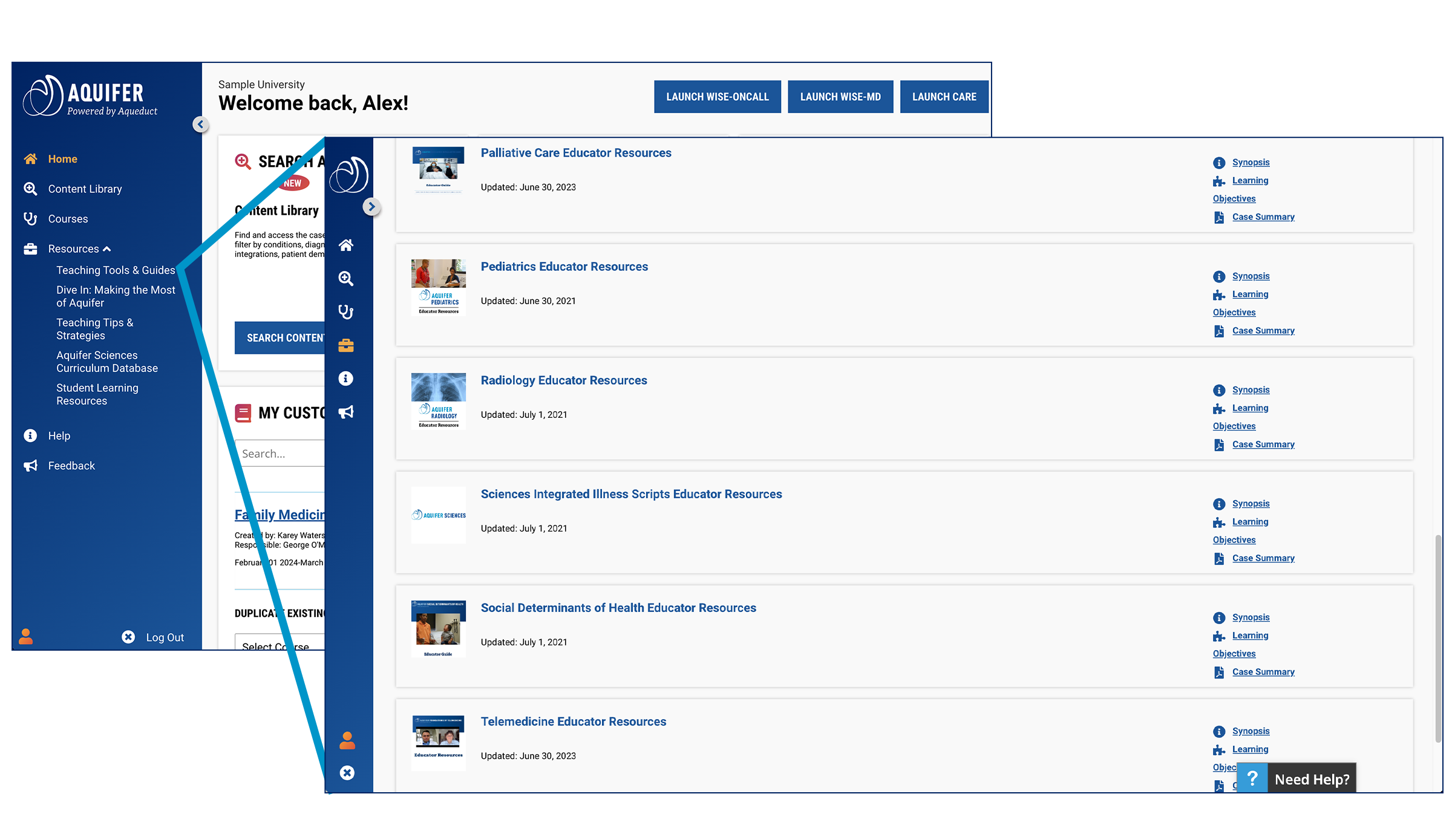Aquifer Pediatrics Active Learning Modules are application exercises designed for educators to use with their students in small or large group settings. These modules have been thoughtfully prepared with the aim of minimizing teacher preparation time and maximizing learner achievement.
What is an Active Learning Module?
An active learning module is a type of facilitated student-centered learning session that promotes students’ ability to apply core concepts and information learned from pre-session assignments to new and more complex scenarios. Active learning modules typically consist of between one and three case vignettes, or “application exercises,” each followed by one to four questions that stimulate the student to combine and apply the learned concepts in new ways. Each question requires the students to do one or more of the following:
- React to a clinical scenario
- Interpret laboratory or other diagnostic data, or
- Respond to other previously unseen information
Students should then have to make a specific choice or create a specific answer to the question.
Answers to these questions should not be found in the pre-assigned Aquifer Pediatrics cases (or in any other resource assigned in the pre-lesson homework), and can only be answered by synthesizing and applying the information learned to reach a single best answer.
Students should be expected to make decisions and use their judgment.
Application exercises simulate authentic clinical scenarios—with appropriate ambiguity and uncertainty—and allow each student or student team to reasonably select a different “best answer” provided they are able to support their answer with reasonable arguments based on the concepts provided in the cases and other advance preparation assignments.
Active learning modules can be used for:
- Flipped classrooms
- Team-based learning
- Small group sessions
Using the Modules
There are currently active learning modules for:
- Pediatric immunizations
- Fever
- Prescription writing/Patient safety
- Child development: Identifying and classifying speech delay
Each module contains:
- A detailed facilitator’s guide: This guide is designed to allow the course director to map the learning objectives to the course curriculum and to understand the expected learning outcomes. In addition, it is designed to provide the granular teaching points and higher order structure needed to allow an instructor novice to use the information to teach a session successfully.
- Pre-session homework assignments: One to three Aquifer Pediatrics cases will be assigned in preparation for the session. Additional reading requiring less than 30 minutes of preparation will also be assigned.
- Individual and group readiness assessment questions: A series of questions to administer to the students at the beginning of the learning session in order to hold the student accountable for the assigned pre-reading. If using team-based learning, the questions will then be repeated as a group.
- Core concepts: Core concepts are the building blocks of clinical decision-making. They are the concepts that allow students to tackle novel clinical scenarios. These are the concepts that we want students to take away from the session.
- Specific learning objectives: The learning objectives are the measurable outcomes for how a student demonstrates mastery of the core concepts.
- Application exercises (in both PowerpointTM and pdf formats): The application exercises are complex clinical scenarios that stimulate students to apply the core concepts that they have learned through their pre-reading. They should require students to work together to come to a solution.
Where to Find the Active Learning Modules
The Pediatrics Active Learning Modules are available to educators and administrators with current subscriptions to Aquifer Pediatrics or Aquifer Family Medicine. To access this resource, sign in to Aqueduct and open the resources tab on the left-hand side of the screen. Click on “Teaching Tools and Guides.” The Active Learning Modules are available for download in the Pediatrics Educator Resources section.

